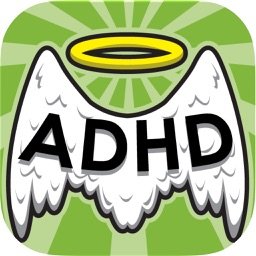Attention-Deficit/Hyperactivity Disorder (ADHD) is a complex neurodevelopmental disorder that affects millions of people worldwide. Characterized by symptoms of inattention, hyperactivity, and impulsivity, ADHD can impact various aspects of daily life, from academic performance to personal relationships. Understanding ADHD involves exploring its symptoms, causes, diagnosis, and treatment options. This comprehensive overview aims to shed light on each of these aspects to provide a clearer picture of the disorder and its implications.
What is ADHD?
ADHD is a chronic condition that often begins in childhood but can continue into adulthood. It is characterized by persistent patterns of inattention, hyperactivity, and impulsivity that interfere with daily functioning and development. The disorder is divided into three primary types based on symptom presentation:
Individuals may struggle with sustaining attention, following through on tasks, and organizing activities. They may seem forgetful and easily distracted.
This type involves excessive fidgeting, restlessness, and difficulty remaining seated. Impulsivity may manifest as interrupting others, blurting out answers, or making hasty decisions.
Individuals exhibit a combination of symptoms from both the inattentive and hyperactive-impulsive types.
Causes and Risk Factors
The exact symptoms of ADHD are not fully understood, but research suggests that it results from a combination of genetic, neurological, and environmental factors. Some key elements include:
Genetics:
ADHD tends to run in families, indicating a strong genetic component. Specific genes related to neurotransmitter systems, such as dopamine, have been implicated.
Brain Structure and Function:
Neuroimaging studies have shown differences in the brain structure and activity of individuals with ADHD, particularly in areas responsible for attention, impulse control, and executive functions.
Prenatal and Early Life Factors:
Factors such as exposure to nicotine, alcohol, or other toxins during pregnancy, premature birth, and low birth weight have been associated with an increased risk of developing ADHD.
Symptoms and Diagnosis
ADHD symptoms can vary widely among individuals and can overlap with other conditions, making diagnosis challenging. To be diagnosed with ADHD, the symptoms must be present for at least six months and cause significant impairment in at least two areas of life, such as school, work, or home.
Diagnostic Criteria:
The diagnosis of ADHD is made based on criteria outlined in the Diagnostic and Statistical Manual of Mental Disorders (DSM-5). These criteria include:
Inattention:
Difficulty sustaining attention, making careless mistakes, not listening when spoken to, and losing things necessary for tasks.
Hyperactivity:
Excessive fidgeting, restlessness, and difficulty staying seated or quiet when expected.
Impulsivity:
Interrupting others, difficulty waiting for one’s turn, and making hasty decisions without considering the consequences.
A comprehensive evaluation typically involves a detailed history, behavioral assessments, and input from multiple sources, such as parents, teachers, and clinicians. This holistic approach helps to ensure an accurate diagnosis and rule out other potential causes of the symptoms.
Treatment and Management
ADHD management involves a multi-faceted approach that combines medication, behavioral therapies, and lifestyle modifications. The goal is to reduce symptoms, improve functioning, and enhance quality of life.
Stimulants, such as methylphenidate and amphetamines, are the most commonly prescribed medications for ADHD. They work by increasing levels of neurotransmitters like dopamine and norepinephrine in the brain. Non-stimulant medications, such as atomoxetine and guanfacine, are also available and may be used if stimulants are ineffective or cause undesirable side effects.
Behavioral interventions focus on modifying specific behaviors and teaching coping strategies. Techniques may include positive reinforcement, organizational skills training, and strategies for managing time and tasks.
Educating individuals and families about ADHD helps them understand the disorder, develop effective coping strategies, and advocate for necessary accommodations at school or work.
A healthy lifestyle can support ADHD management. Regular physical activity, a balanced diet, and adequate sleep contribute to overall well-being and can help mitigate some symptoms of ADHD. Establishing routines and using organizational tools, such as planners or apps, can also be beneficial.
Building a strong support network is crucial for individuals with ADHD. Support from family, friends, educators, and healthcare professionals can provide encouragement and practical assistance in managing the disorder.
ADHD in Different Age Groups
ADHD manifests differently across the lifespan, and understanding these variations can aid in effective management.
Children:
In children, ADHD often presents as disruptive behavior in school and difficulty following instructions. Early diagnosis and intervention are essential for minimizing academic and social challenges.
Adolescents:
Teenagers with ADHD may face increased challenges related to impulsivity and organizational skills, impacting academic performance and social interactions. They may also be at higher risk for co-occurring conditions, such as anxiety or depression.
Adults:
ADHD symptoms can persist into adulthood, affecting work performance, relationships, and daily responsibilities. Adults with ADHD may struggle with time management, organization, and maintaining focus, and may benefit from continued therapy and medication.
Challenges and Misconceptions
Understanding ADHD also involves addressing common misconceptions and challenges associated with the disorder.
Misconceptions:
ADHD is often misunderstood as a lack of willpower or discipline. However, it is a legitimate medical condition that requires appropriate treatment. The symptoms are not simply a result of laziness or poor parenting.
Stigma:
Individuals with treatment of ADHD may face stigma or judgment, which can impact their self-esteem and willingness to seek help. Promoting awareness and empathy can help reduce stigma and encourage supportive environments.
Co-occurring Conditions:
ADHD often coexists with other disorders, such as learning disabilities, anxiety disorders, and depression. Comprehensive treatment must address these co-occurring conditions to achieve the best outcomes.
Conclusion
ADHD is a multifaceted disorder that affects individuals in various ways. A thorough understanding of its symptoms, causes, and treatment options is essential for effective management. With appropriate interventions, support, and education, individuals with ADHD can lead successful and fulfilling lives. Continued research and awareness are vital in improving our understanding and support for those affected by this challenging condition.
